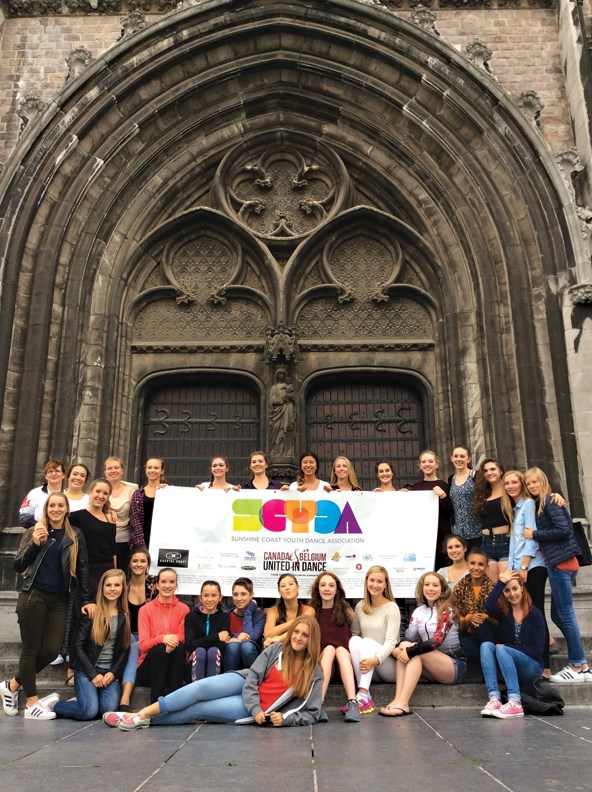Coast artist Miyuki Shinkai was one of the adult leaders who organized and chaperoned 20 dancing teens, 25 parents and two teachers for ten whirlwind days in Europe. She called it a humbling experience.
The dancers, all part of DSdanse and studying at Dominique Hutchinson’s School of Dance, honoured the Canadian dead in World War I with their dances and their presence in Belgium and France. Along the emotional, tear-filled way, they learned a lot about war and Canadian sacrifice and were gratified to be thanked by the Belgians for the part their grandparents and great-grandparents played in the war. They also connected with their counterparts in Belgium, the Cie Ph/f/ase dance troupe that recently visited the Coast.
The journey began in Amsterdam, Holland, where the dancers, at an average age of 16, visited the Rijksmuseum and learned history.
“It was almost too much for the girls to digest,” Shinkai said. Then it was on to the Anne Frank House where the young diary writer hid from the Nazis for three years. “We all cried.”
At the first stop in Belgium, at Ghent, and the subsequent visit to Ostend, the group was housed with great hospitality by the Belgian host families, sometimes in homes with many others.
“It was a humbling experience for them to share,” Shinkai said. The older, smaller homes gave less space than they had at home, but the hospitality was big. “The Belgians had such dedication to their guests,” she said.
Hutchinson, artistic director for the group, was moved. “Aug. 16 was definitely the most emotional and overwhelming day of this whole Canada/ Belgium project,” she wrote. “It started with the Canadian Vimy Ridge memorial (in France) … scarred by its past... this majestic monument in honour of our Canadians that lost their lives in the war.”
Two performances at Ostend had prepared the dancers for a show at Passchendaele Memorial Museum, on the site of a 1917 battle in which over 15,000 Canadians were killed. There, the girls danced outside, between the trees, performing the dances recently seen in Gibsons that told the stories of war. It included a moving tribute to the fallen and the words of a poem, In Flanders Fields.
Cultural programming receives financial support in Belgium, Shinkai said, and audiences are accustomed to seeing free performances in the parks. As the troupe danced, the audience gathered. When they noticed the Canadian flags on the dancers’ jackets and saw the red banner of poppies, they understood that these young women represented Canada.
At the Tyne Cot cemetery, the largest site of Commonwealth
war graves, a new generation connected with a past one. One dancer found the gravesite of a relative and the visitors became aware of the injustice – that such a man should have to die at the age of 24.
Then it was on to the Menin Gate where three of the visitors, Saskia Goetghebeur, Erika Kenny and Hutchinson, laid a wreath on behalf of the Sunshine Coast Youth Dance Association (SCYDA), the entity that raised funds and organized the trip. Each day at the gate a ceremony takes place to honour the fallen and missing. It was an emotional moment as others in the group searched the walls for the many names of soldiers written there.
Hutchinson was delighted with the magic that had unfolded. “Dance became the tools,” she wrote, “the 100th anniversary of World War I was the excuse, and the true pearl is the marks and memories this event will be leaving inside each participant.” She points out that its success was no accident but the result of a well-organized choreography in which dancers created the vision, prepared the images and delivered their best.
Shinkai recalls that often there were so many events and so much information that many of the group became exhausted. A farewell party on the last day in the historical town of Bruges provided an outlet for emotion and was a chance to give a big thank-you to their hosts.



